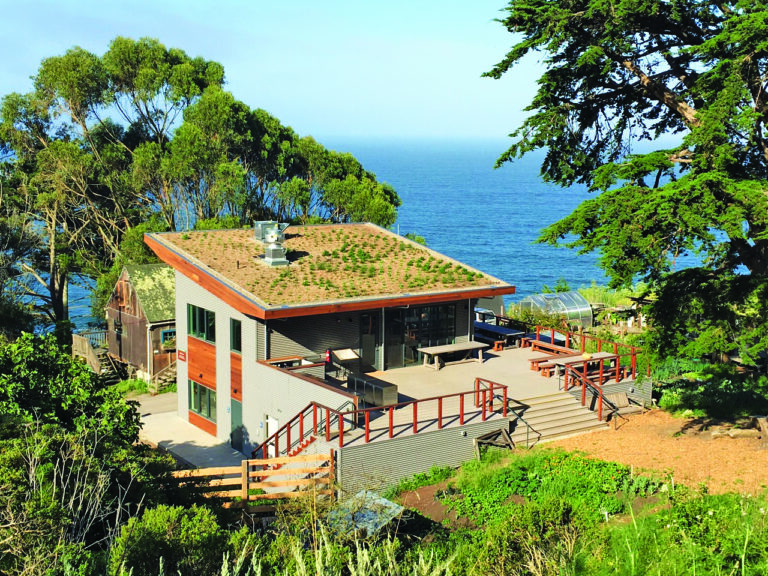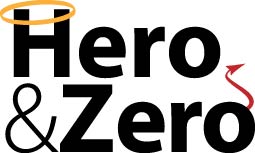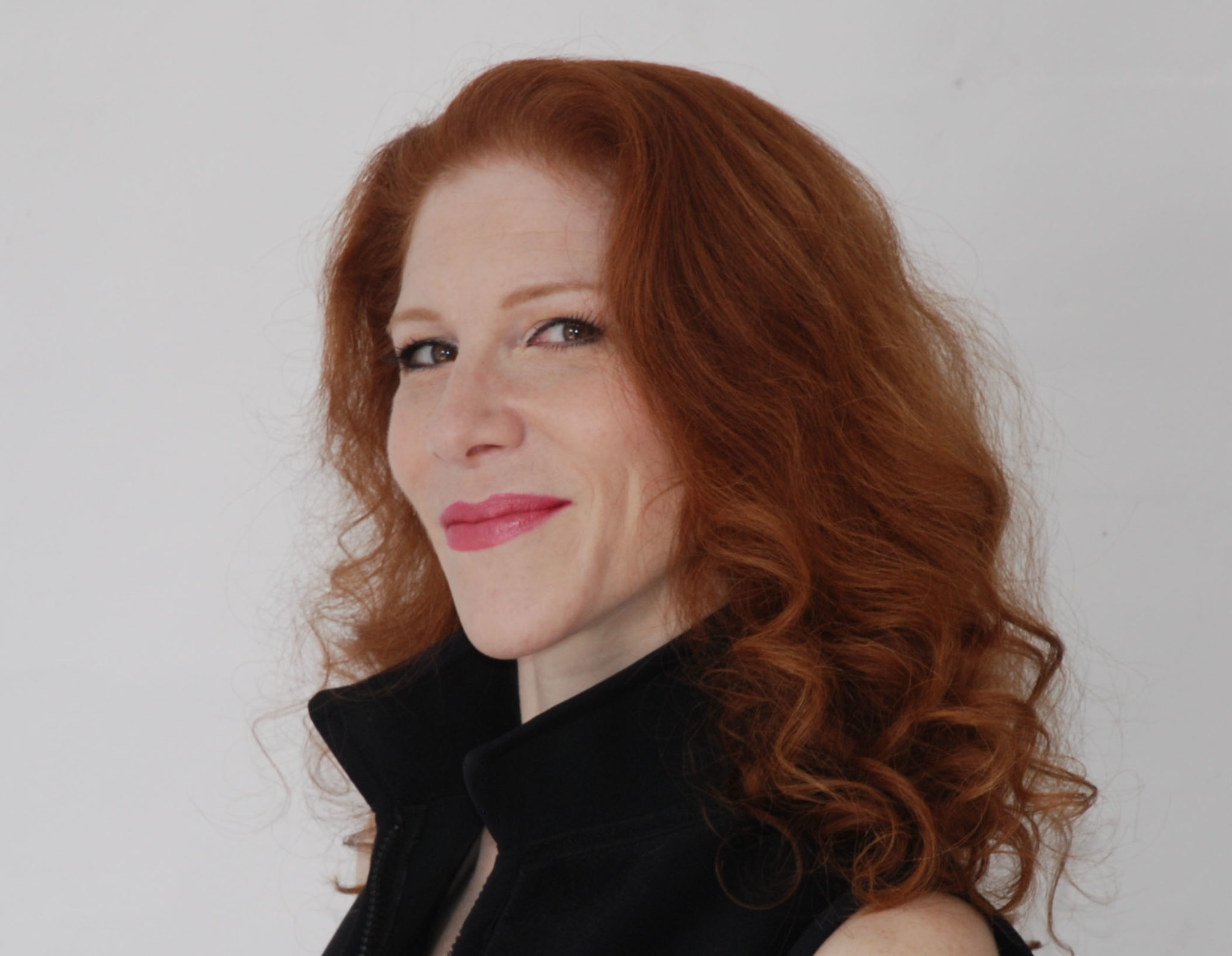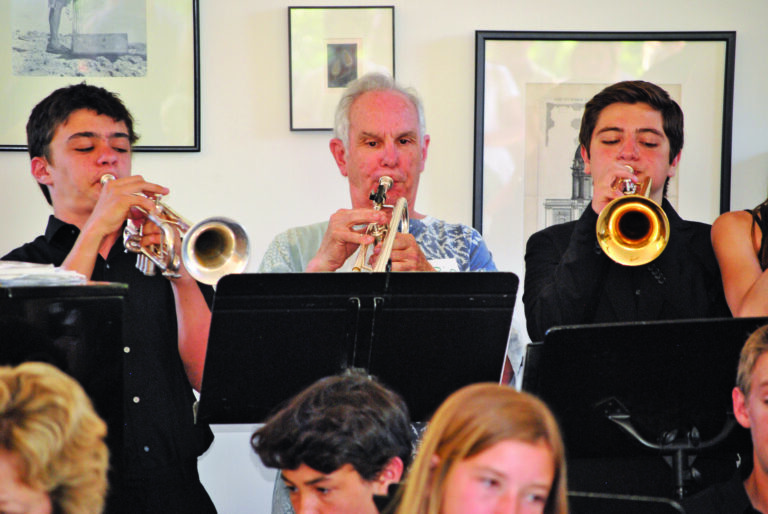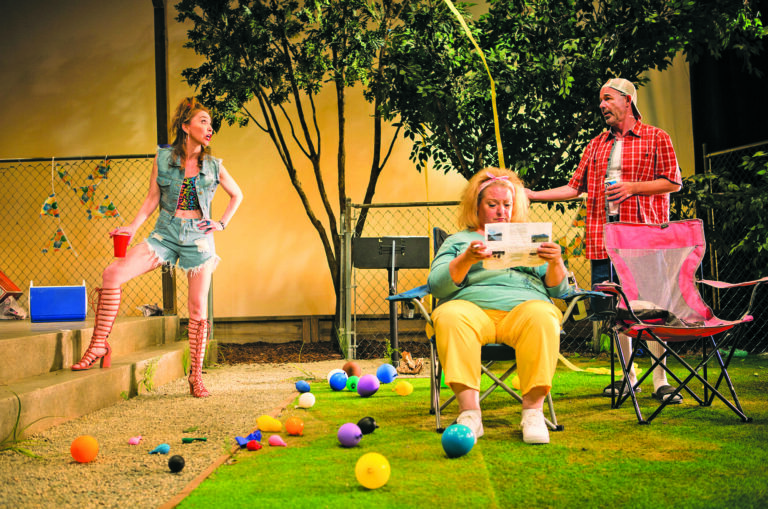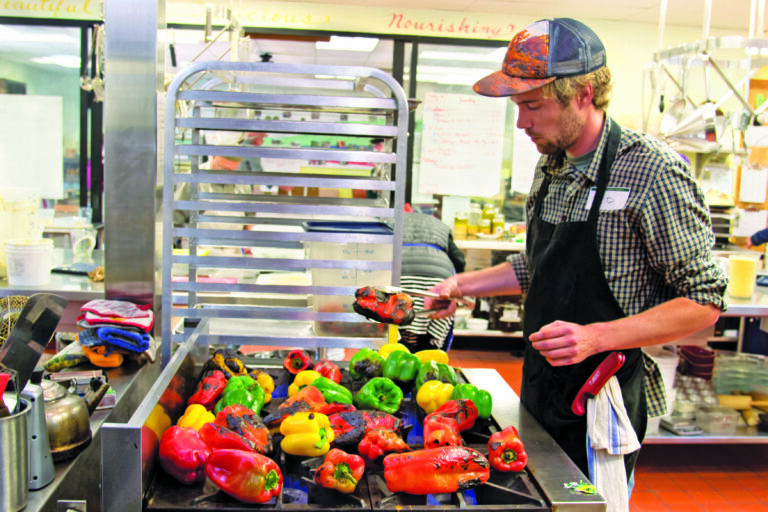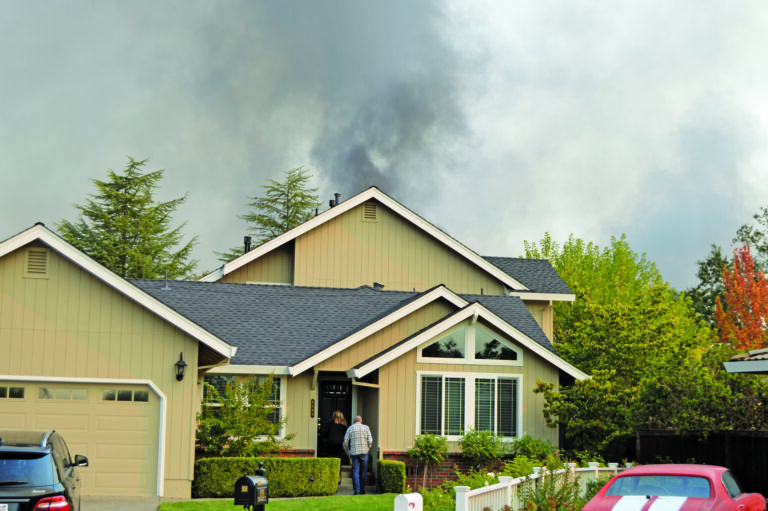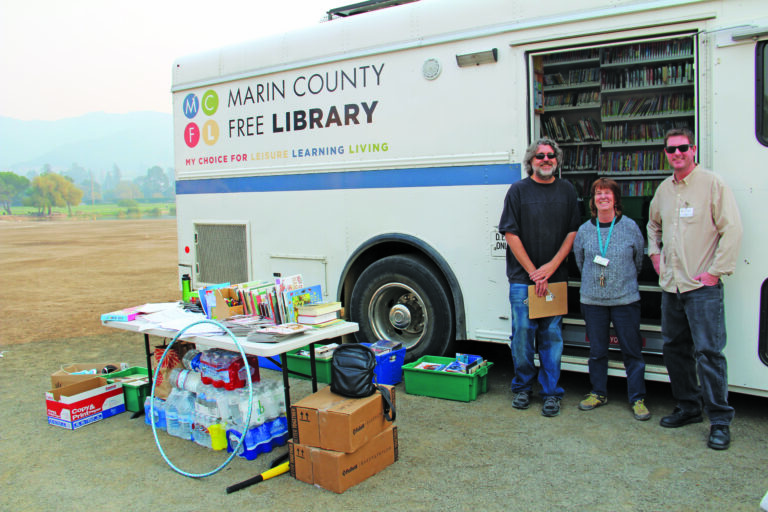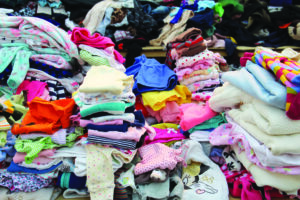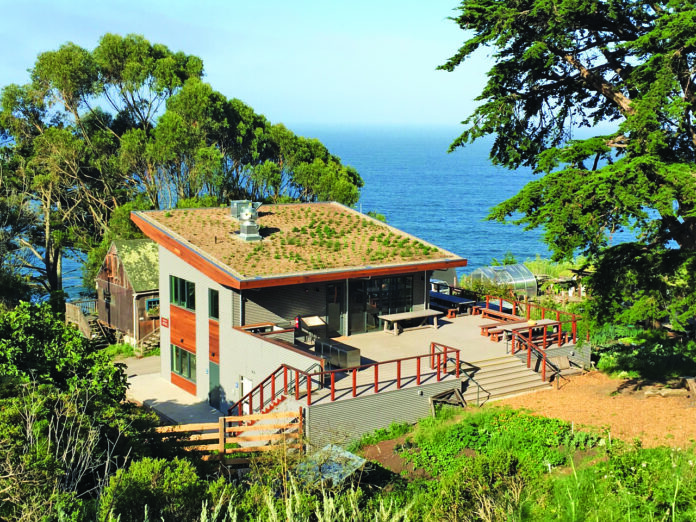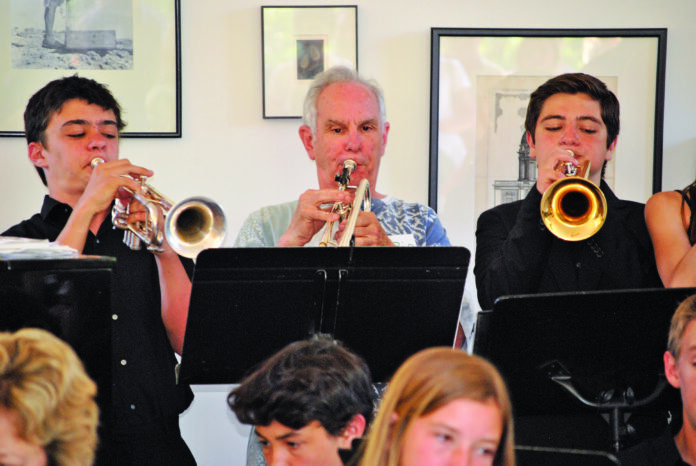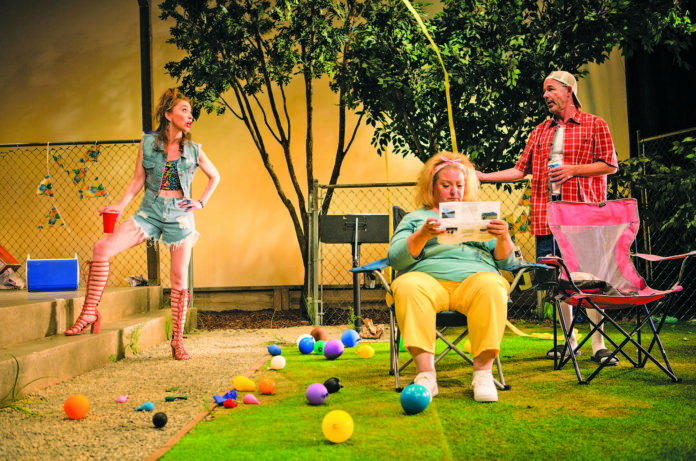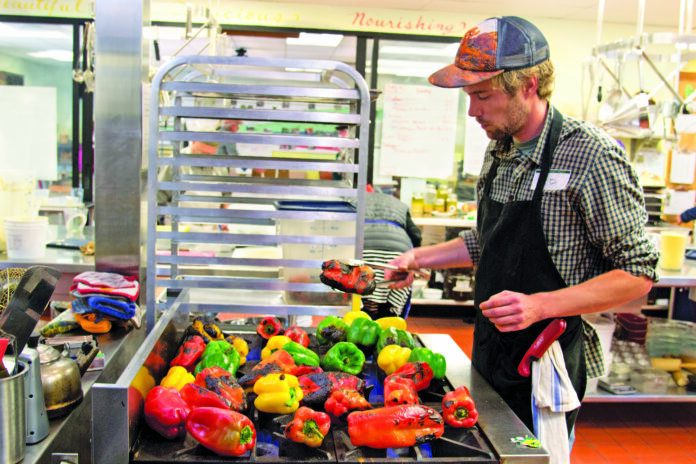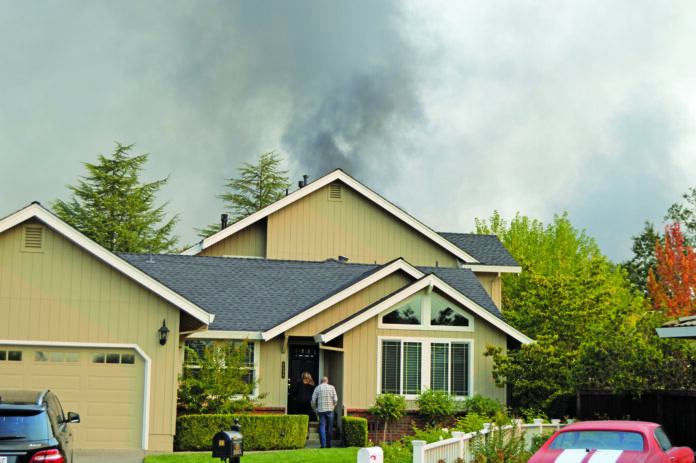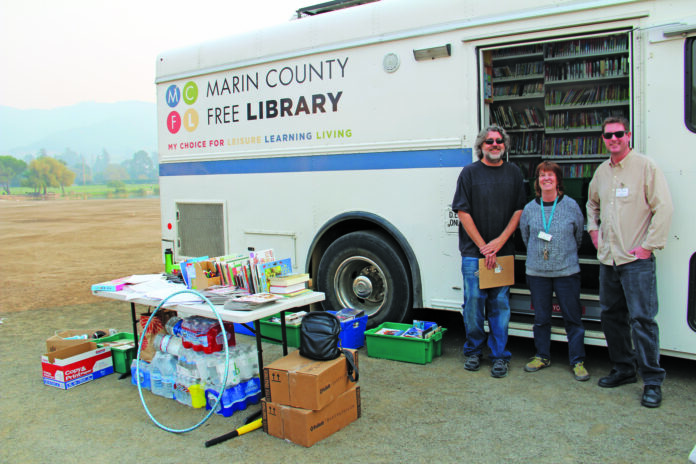Every decade brings new parenting challenges. For the modern-day parent, it’s the ‘screen time’ dilemma, complicated by the fact that these days, many schools offer coding and animation classes. While the future is waiting for no one, surely, good old nature will always be there, offering solace and welcome ‘unplugging.’ Slide Ranch, a nonprofit organization established in 1970, is now providing even more chances to do just that, with its new Farm-to-Table Teaching Center (FTTC).
Slide Ranch, located in Muir Beach, is offering schools, families and individuals opportunities to connect with Northern California’s agriculture, farm animals and natural resources. The center, which opened in late September, is, according to Executive Director Maika Llorens Gulati, a “state-of-the-art children’s eco-learning center and kitchen, the first of its kind of the Bay Area.”
Being the first new building on the ranch in 50 years, the teaching center features a commercial teaching kitchen, a deck overlooking the Pacific Ocean, a living roof designed by landscape architect Paul Kephart and fully accessible design.
“It significantly enhances and expands Slide Ranch’s unrivaled, nationally renowned environmental education and lifestyle programming,” Llorens Gulati says. “It’s groundbreaking and gorgeous.”
Designed by architect Mark Cavagnero, who also created the San Francisco Jazz Center and the Wilsey Center for Opera, the center is not about appearance alone.
“We have been planting kids in nature since 1970 and this center has been a dream for many of those years, and we are elated with the result,” Llorens Gulati says. “We’re excited to position Slide Ranch as an environmental education and lifestyle destination through programs and events that highlight the best of life in nature.”
In fact, she says, the Slide Ranch “punny” motto, ‘planting kids in nature,’ couldn’t be more accurate; the outdoor venue uses organic gardens and animals to teach an appreciation for healthy foods, healthy living and environmental awareness. “We give the kids a respite from modern childhood,” Llorens Gulati says.
“It’s now more important than ever to take care of environmental education,” Llorens Gulati, continues, on the importance of educating kids on environmental issues. “We give kids, 70 percent on scholarship from over 100 Bay Area organizations, their first view of the ocean, first sense of outdoor freedom, first taste of fresh vegetables, first milking of a goat, first night under the stars. Better for their health and mental well-being.”
The ranch currently sees about 10,000 visitors a year. Roughly one third are from Marin, one third are from San Francisco and the rest are from the East Bay. The scholarships are based on the need of each particular school or community group, according to Llorens Gulati. “In many cases we also have to offer support for transportation. We know that access to transportation is very limited in many cases and one of the main reasons of inequity for children to have access to nature,” she says. “These kids live right here in the Bay Area, and yet hiking, being with the animals and gardening are not experiences that these kiddos have access to. Many have had trauma and simply being outdoors is very restorative.”
With the new center, the ranch plans to expand its current curriculum to teach visitors where the food comes from, as well as different ways to cook in a healthy and sustainable way, the difference between industrial farming and local organic farms and how they affect the environment. 2018 will bring in Farm-to-Table events, cooking classes and other educational workshops with subjects that cover natural tie-dyeing, beekeeping at home, floral arrangements, composting, gardening at home and photography in nature. “Some of these activities will allow us to expand our scholarship opportunities to connect more children from low-income communities to nature,” Llorens Gulati says.
The Bay Area itself is a powerful teaching tool. “Our location tells the story and it allows us to offer a hands-on experience that is hard to find anywhere else with three components—our organic farm, the grasslands and the seashore ecosystem,” says Llorens Gulati. “For example, we can teach about our oceans down by our immaculate tidepools and use all our senses to experience that learning.”
Another bonus? Slide Ranch is only 30 minutes from the Presidio in San Francisco, which allows many groups to come and experience the best of nature without having to spend hours driving. “You are very close to the city and yet you feel you are in a different world,” she attests. “Our overnight camping is the secret jewel of Marin, right by the ocean where you see millions of stars and just hear waves and our occasional nocturnal friends passing by.”
In addition to kids’ education and open days for families to come visit and pet the occasional goat, the ranch is home to a Teachers-in-Residence program, focused on planning and leading experiential learning programs with children, youth and families, a summer camp and a chefs’ collective, which includes chefs from Bay Area standouts like flour + water, SPQR and State Bird Provisions.
One would think that the operation is run by dozens of dedicated employees.
“Slide Ranch currently has 10 staff members and seven teachers-in-residence, adding three more teachers-in-residence during the summer,” Llorens Gulati says. The demand, however, is big. “We receive over 150 applications each year for our Teachers-in-Residence program from all over the U.S. Our common denominator is a strong passion for the environment, education and equity, and to make a difference protecting our land and making connections with our planet and each other.”
As for those parents bringing their kids in? They’ve got something to learn, too.
“We can educate by example, by being good stewards and doing what we can to reduce our footprint,” Llorens Gulati says. “It really starts in our ecosystem, what we buy, packaging, how we cook and what we eat, reducing and recycling, maybe start with a little garden at home.
“I have to say in many cases our kids are now educating us about the importance of caring for our land and our oceans!” she continues. That’s exactly the outcome you dream of.
Slide Ranch, 2025 Shoreline Highway, Muir Beach; 415/381-6155; slideranch.org.

